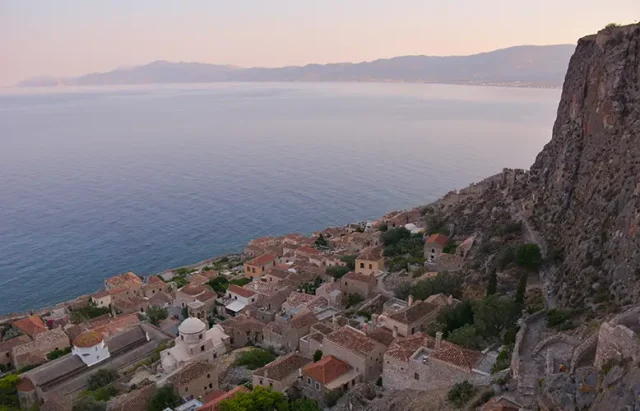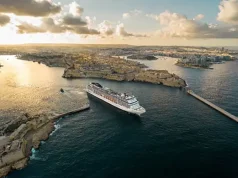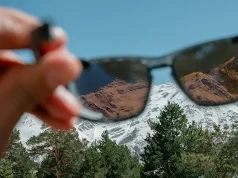
From the mainland, Monemvasia looks like a mountain drifting in the sea. It rises abruptly from the water, its cliffs steep and unbroken, joined to the coast by a single narrow causeway. The town is hidden behind the rock, invisible until you cross over. Only then does it appear — a maze of stone houses, cobbled lanes, and Byzantine walls pressed tightly against the southern slope.
The air smells of salt and thyme. The sea moves quietly below, tracing the same rhythm it has for centuries. Monemvasia feels timeless not because it has been preserved but because it has never hurried to change.
The Rock and Its History
Monemvasia means “single entrance,” a name that tells its story. Founded in the sixth century as a refuge from invasions, it grew into one of the most important fortified towns of medieval Greece. Venetians, Byzantines, and Ottomans all ruled here, leaving layers of architecture and memory that still define the streets.
From the gate, a single stone passage curves upward through arches and tunnels. The sound of footsteps echoes softly between the walls. It is easy to imagine merchants and sailors walking the same path centuries ago, carrying goods from the port below to the markets above.
Every corner of Monemvasia holds traces of its long life — carved lintels, hidden courtyards, small churches with fading frescoes. The town’s colors are those of the earth itself: terracotta roofs, pale stone, the green of olive leaves. In the afternoon, when the light turns gold, everything seems to blend with the rock behind it.
The Lower Town
The lower town lies within the walls, pressed between sea and cliff. Narrow alleys twist upward toward the fortress, lined with houses that have been restored with quiet care. Balconies lean over the lanes, their iron railings heavy with geraniums and jasmine. The hum of conversation drifts from small tavernas where locals gather for wine, olives, and grilled fish.
At the edge of the walls, the sea spreads wide and blue. The light here changes constantly. In the morning it is sharp and white; by evening it turns soft, almost liquid. The stone absorbs it slowly, giving everything a kind of glow.
You can walk the length of the lower town in ten minutes, but it never feels small. Each turn opens to a new view — a doorway, a terrace, a sliver of horizon. The architecture is dense yet graceful, shaped by necessity and by the sea’s constant breath.
The Climb to the Upper Town
A steep path leads from the lower town to the fortress above. The climb is short but demanding, the stones worn smooth by centuries of feet. As you ascend, the town falls away behind you, and the wind from the Aegean grows stronger.
At the top, the remains of walls and towers spread across the plateau. Wild herbs grow between the stones, and lizards dart across the sunlit ruins. From here the view is immense — the blue of the sea on three sides, and the faint outline of the mainland beyond the causeway.
The church of Agia Sophia stands near the edge, its dome still intact, its walls marked by time. Inside, the air is cool and faintly scented with incense. Light filters through small windows, settling on faded frescoes that have survived invasions and earthquakes alike. The silence is complete.
The Surrounding Landscape
Beyond the rock, the coast of Laconia stretches quiet and green. Olive groves, vineyards, and small farms fill the valleys, while mountain roads lead inland to villages where life still follows the old rhythm. Many Greece bike tours include this southern region in their routes, linking Monemvasia with nearby towns such as Gerakas and Gythio. The roads curve gently between fields and sea, passing stone churches and wayside shrines painted white against the light.
Cycling here feels like tracing the edge of time. The landscape moves slowly — the glint of water through reeds, the hum of insects in the heat, the occasional glimpse of the rock from a new angle. There is a feeling of continuity that asks for quiet rather than speed.
The coastline south of Monemvasia remains mostly untouched. Small coves open between cliffs, and the sea is clear enough to show every ripple of sand below. Fishermen still mend their nets on the shore, and the sound of the wind carries further than the sound of engines.
The Light at Dusk
When evening comes, Monemvasia seems to withdraw into itself. The walls turn the color of copper, and the shadows lengthen across the cobbles. The sea below grows darker and begins to reflect the first lights of the houses.
People gather in small squares to talk softly, the air filled with the scent of rosemary and grilled bread. Somewhere, a bell rings from one of the small churches, its tone deep and slow. The sound carries over the water and fades into the distance.
From a terrace near the edge of town, you can watch the horizon disappear. The stars rise one by one, and the sea turns to glass. The rhythm of the waves below feels ancient, a steady pulse that ties the past to the present.
A Town that Endures
Monemvasia has changed hands many times, yet it has never lost its shape. Its streets remain narrow, its stones worn but strong. Even as hotels and cafés appear within its walls, the town refuses to lose its quiet dignity. Restoration happens slowly, carefully, always with a sense of respect.
Visitors come and go, but Monemvasia stays the same. It is not a monument but a living place, still breathing, still watching the sea. The people who live here tend their homes, their gardens, and their stories, passing them on as naturally as the tides.
Standing on the walls at night, with the wind rising from the water, you can feel the centuries gather around you. There is no separation between then and now, only the continuity of stone, salt, and human touch.
Monemvasia endures because it does not pretend. It remains what it has always been — a town between earth and sea, built from patience and light.





